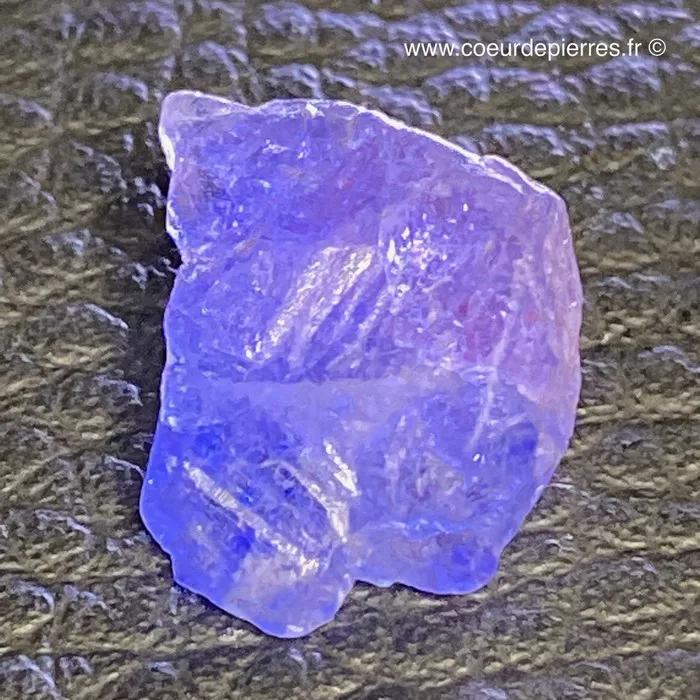Tanzanite, renowned for its striking blue-violet color and remarkable beauty, holds a unique distinction among gemstones—it is found exclusively in Tanzania. The gemstone’s origin and limited geographical occurrence have fascinated gem enthusiasts for decades. In this article, we delve into the geological factors that make Tanzania the sole source of tanzanite, exploring the specific conditions under which it formed and the geological history that led to its exclusive deposit.
GEOLOGICAL ORIGINS
Tanzanite’s singular presence in Tanzania can be traced back millions of years to a remarkable chain of geological events. The gemstone is believed to have formed during a process known as metamorphism. This occurred when heat and pressure acted upon specific rocks in the Earth’s crust, causing them to undergo a transformation and create tanzanite.
THE UMBALI PRECIOUS CORUNDUM DEPOSIT
The birthplace of tanzanite lies within the Umbali Precious Corundum Deposit, located in the Merelani Hills of northern Tanzania. The deposit spans an area of approximately eight square kilometers, situated near the majestic Mount Kilimanjaro. Within this confined region lies the only known commercial mine where tanzanite is extracted.
UNIQUE GEOLOGICAL CONDITIONS
Several unique geological conditions converged to create the ideal environment for tanzanite’s formation. Firstly, the Merelani Hills were once part of an ancient ocean floor. Over time, tectonic forces caused the oceanic crust to collide with the continental crust, resulting in the uplift of the seabed.
During this uplifting process, the rocks in the area underwent intense heat and pressure from the nearby volcanic activity associated with the East African Rift System. This metamorphic event caused significant changes in the minerals present, ultimately leading to the formation of tanzanite.
THE ROLE OF VANADIUM
The presence of vanadium played a crucial role in the formation of tanzanite’s distinctive blue-violet color. Vanadium is a trace element that acts as a chromophore, imparting color to gemstones. In the case of tanzanite, the interaction between vanadium and other elements within the rocks created the unique blue-violet hues that make tanzanite so sought after.
It is worth noting that while vanadium is present in various locations around the world, the specific combination of geological events required to create tanzanite has only occurred in Tanzania.
MINERAL ACCESSIBILITY
Another reason tanzanite remains exclusive to Tanzania is its limited accessibility. The gemstone deposits are found at depths ranging from 100 to 700 meters below the Earth’s surface, necessitating extensive mining operations to extract the precious stones. Accessing these deep deposits requires significant investment in both infrastructure and expertise, making tanzanite mining a complex and challenging endeavor.
LEGAL PROTECTIONS
The Tanzanian government recognizes the importance of preserving the country’s natural resources and has implemented regulations to safeguard tanzanite. In 2010, the government established the Tanzanite One Mining Company and granted it exclusive rights for tanzanite mining in the Merelani Hills. This move aimed to ensure responsible extraction practices and prevent illegal mining activities, thereby protecting the integrity and value of tanzanite as a national resource.
CONCLUSION
Tanzanite’s exclusivity to Tanzania arises from a combination of unique geological conditions, including intense heat, pressure, and volcanic activity over millions of years. The convergence of these factors led to the formation of tanzanite within the Umbali Precious Corundum Deposit in northern Tanzania.
Furthermore, the presence of vanadium, coupled with the specific geological events, bestowed tanzanite with its distinctive blue-violet color. The limited accessibility of the gemstone’s deposits and the Tanzanian government’s commitment to responsible mining practices further contribute to tanzanite’s exclusive association with Tanzania.
As a result, tanzanite remains one of the most sought-after gemstones in the world, cherished for its rarity, unparalleled beauty, and intriguing geological origins.


